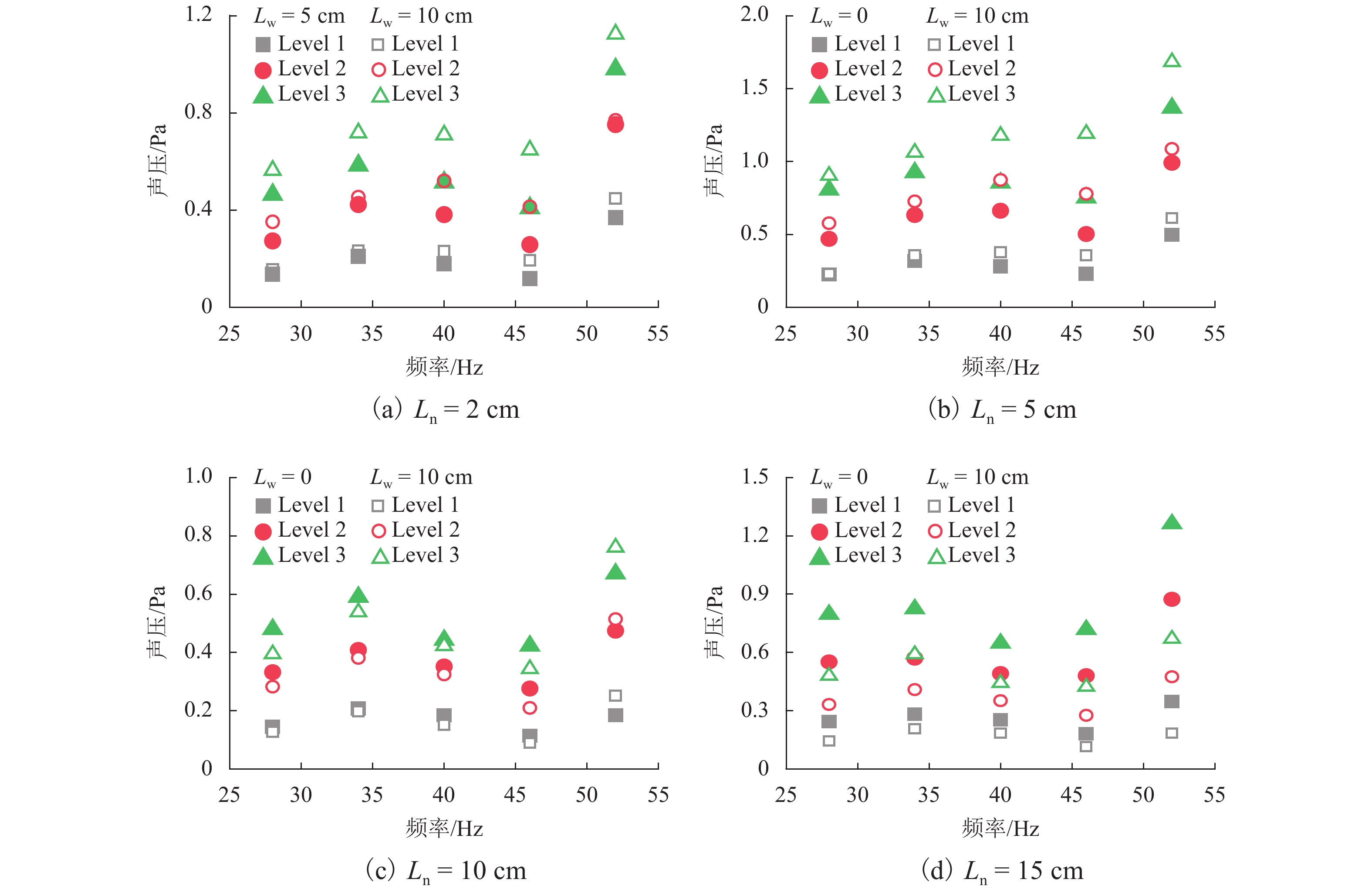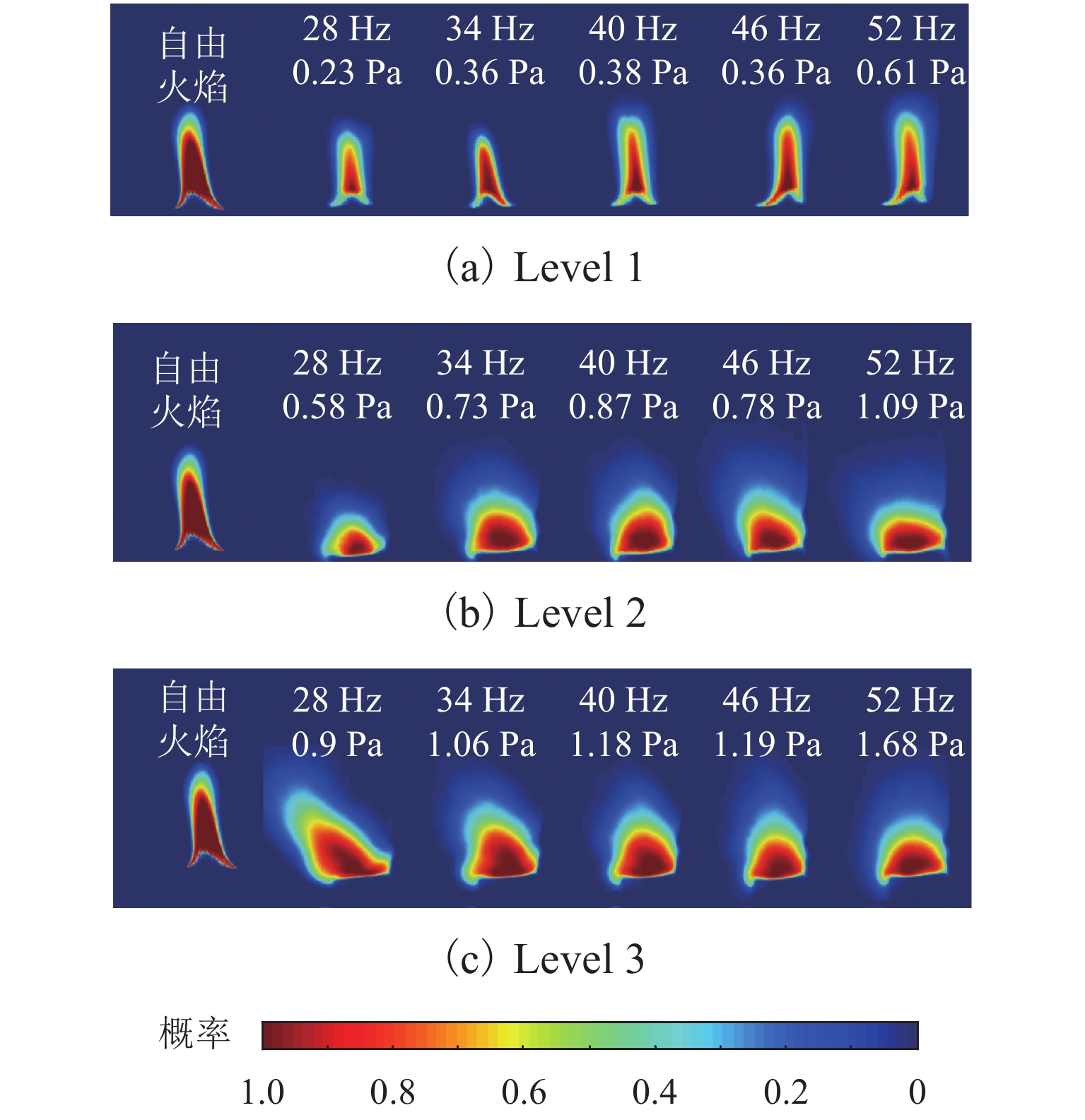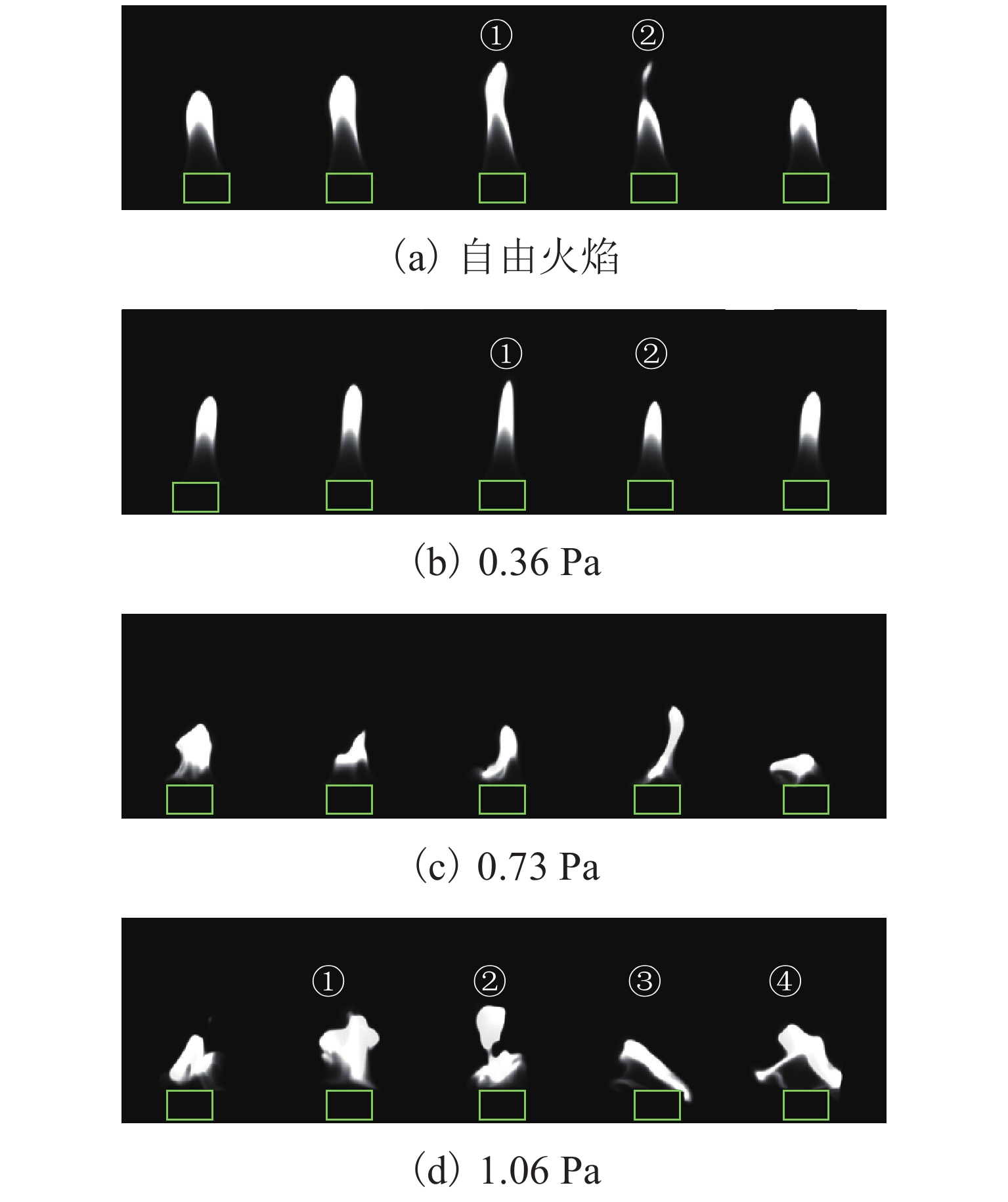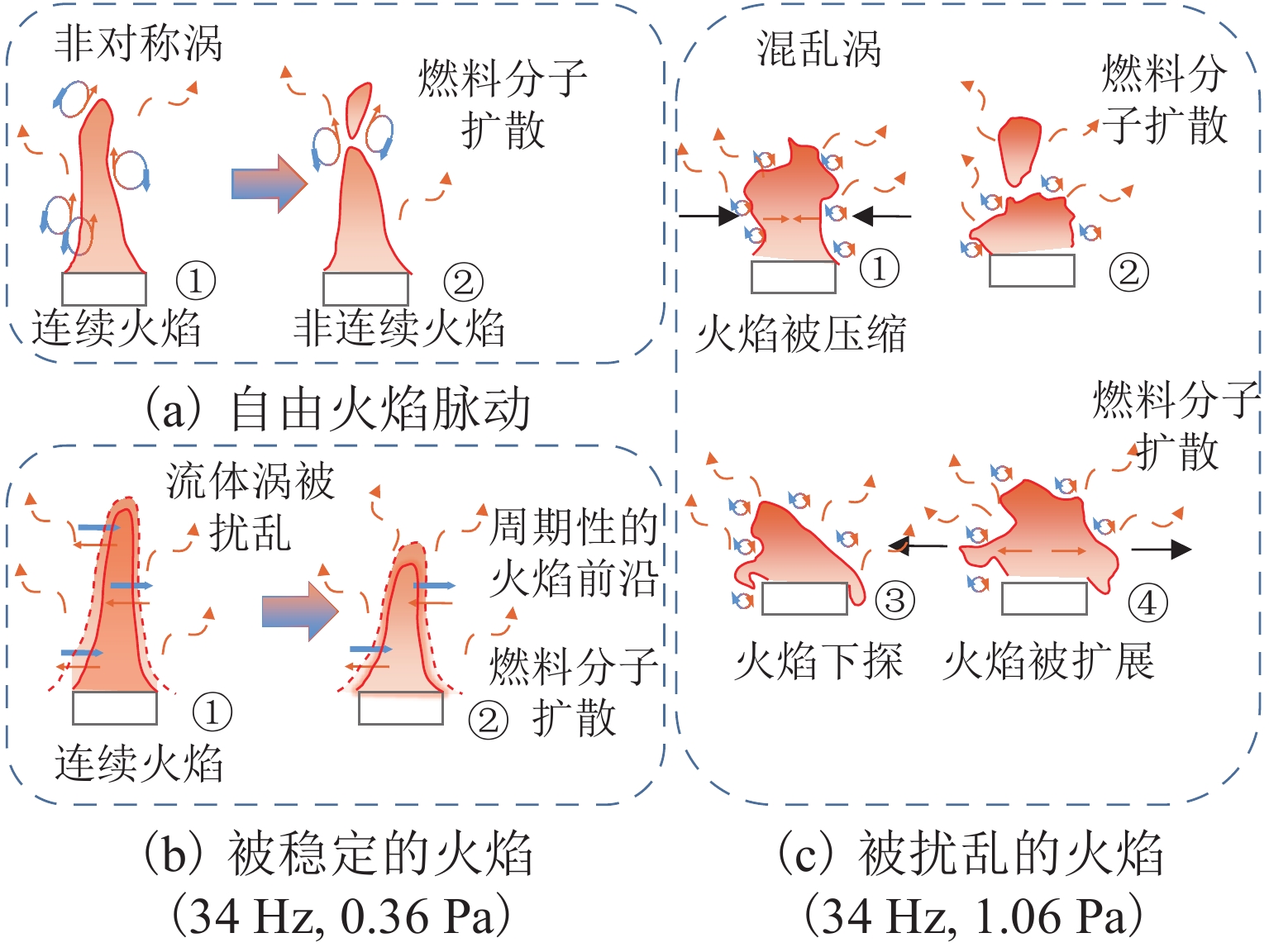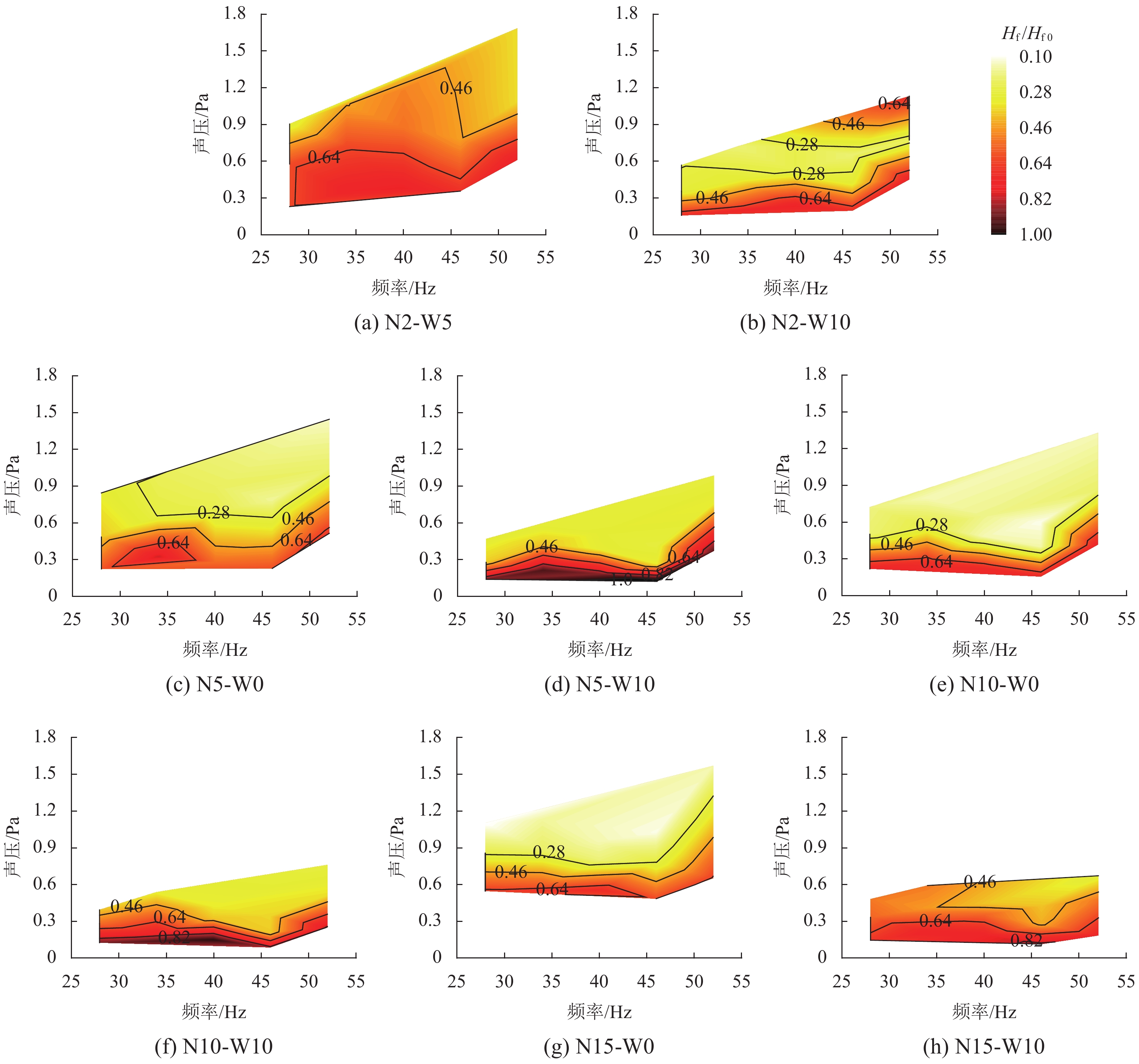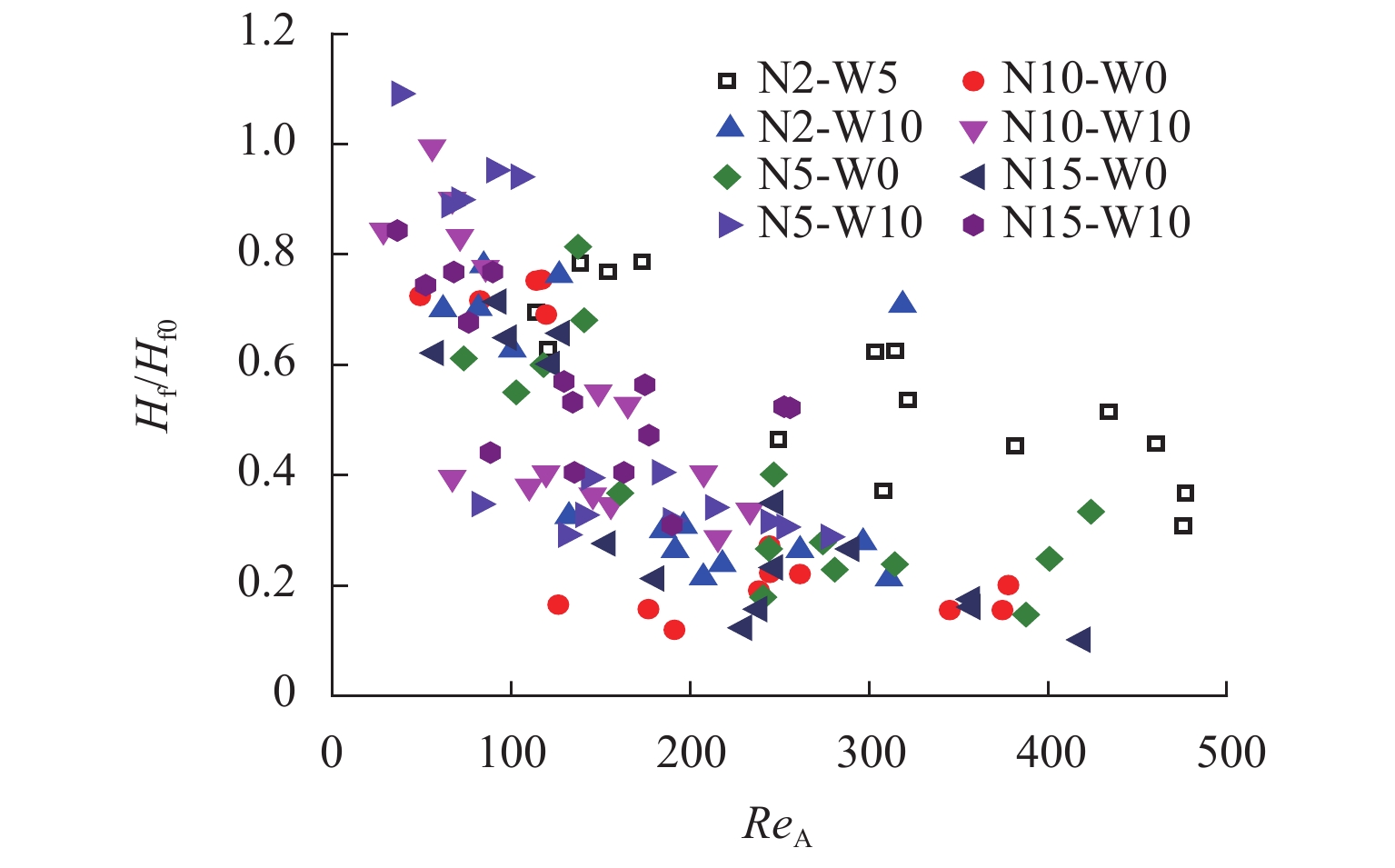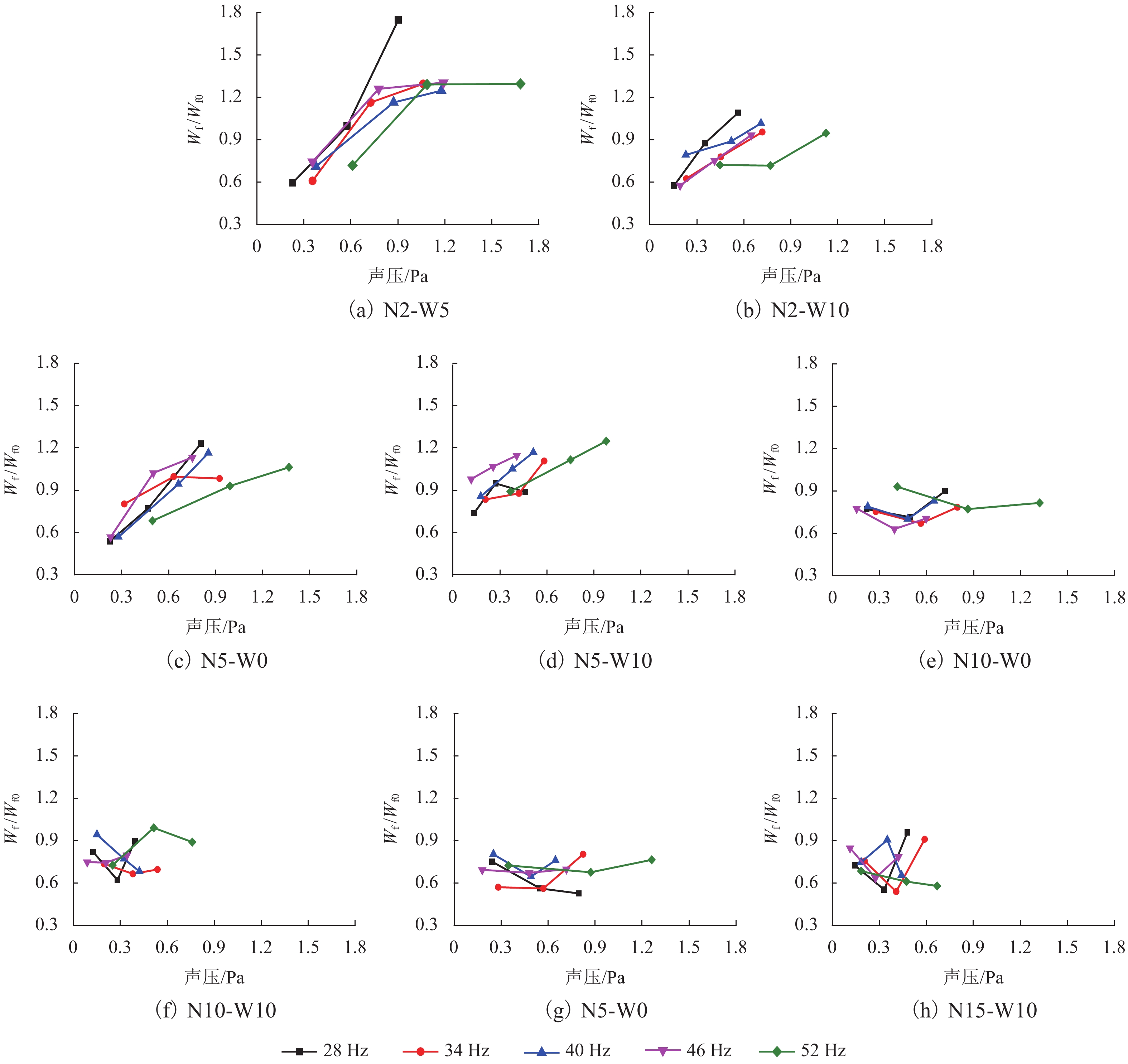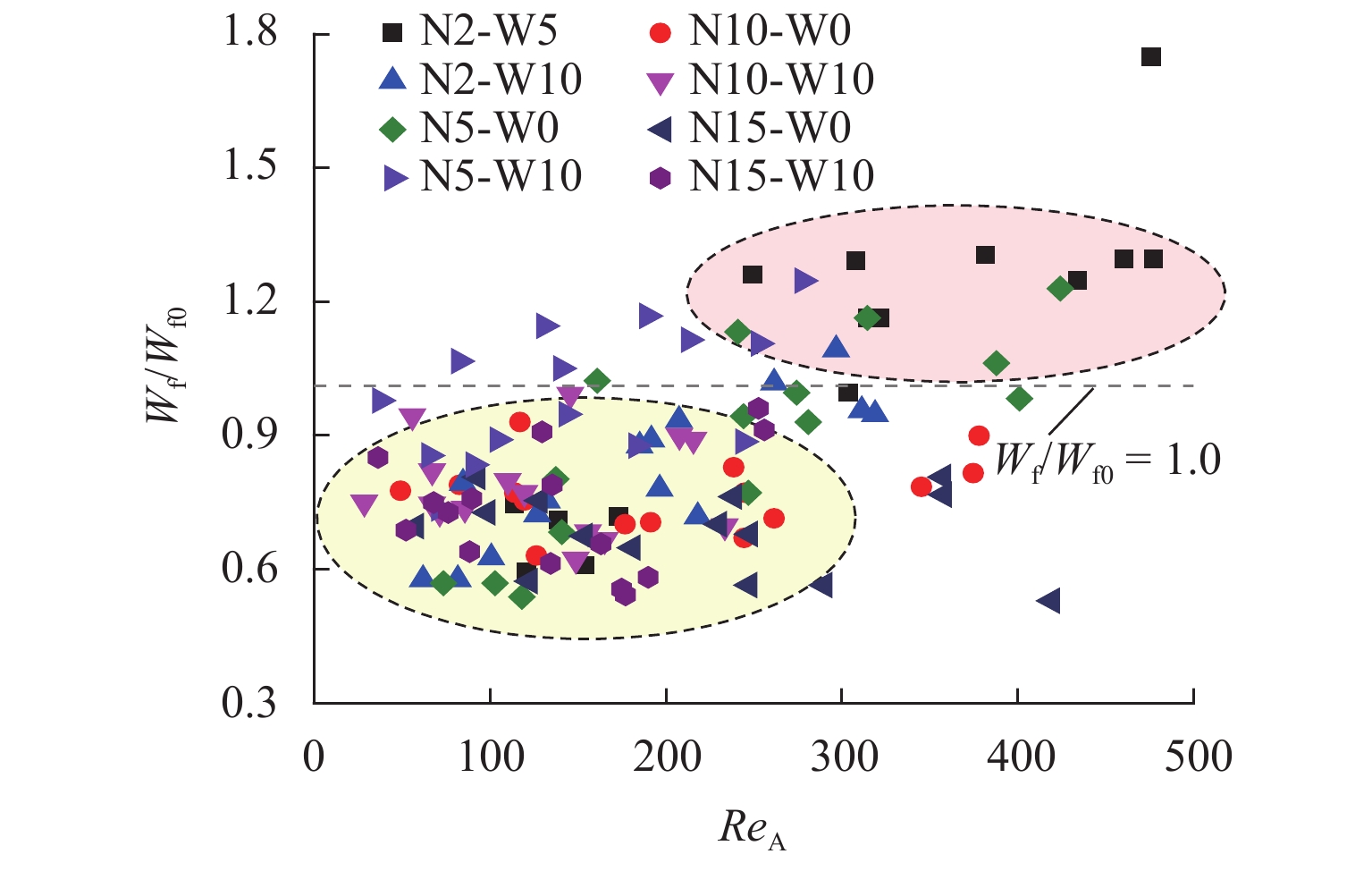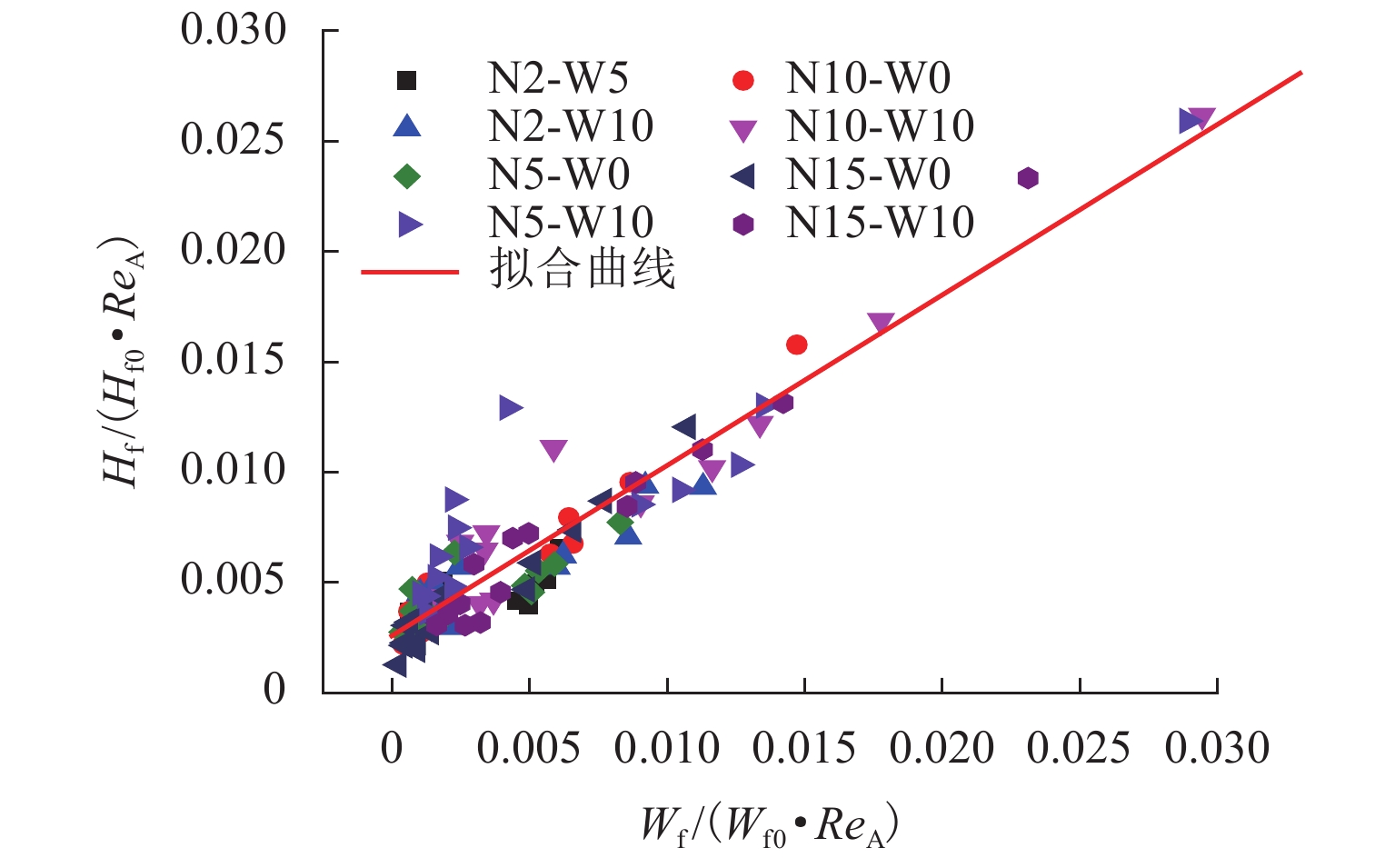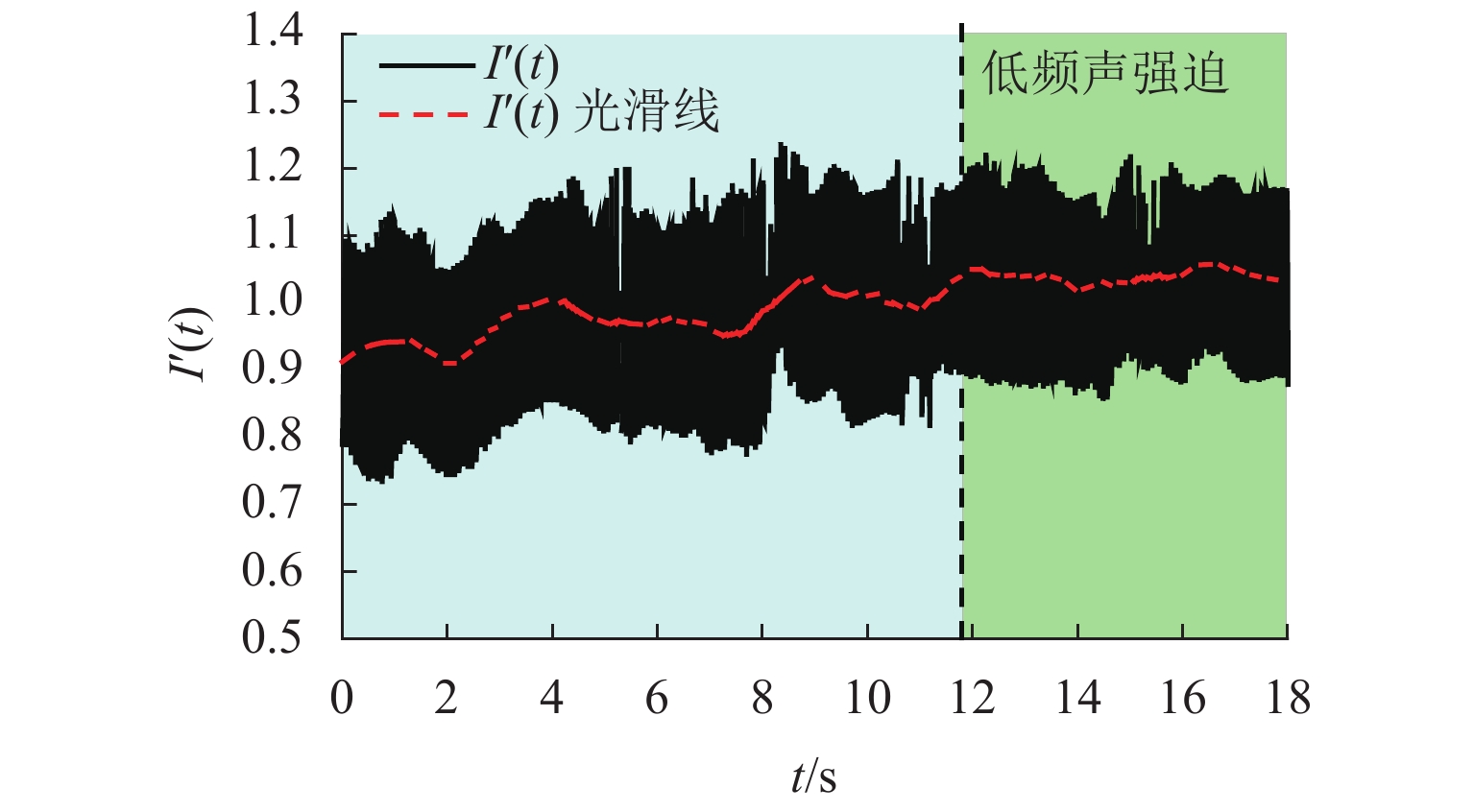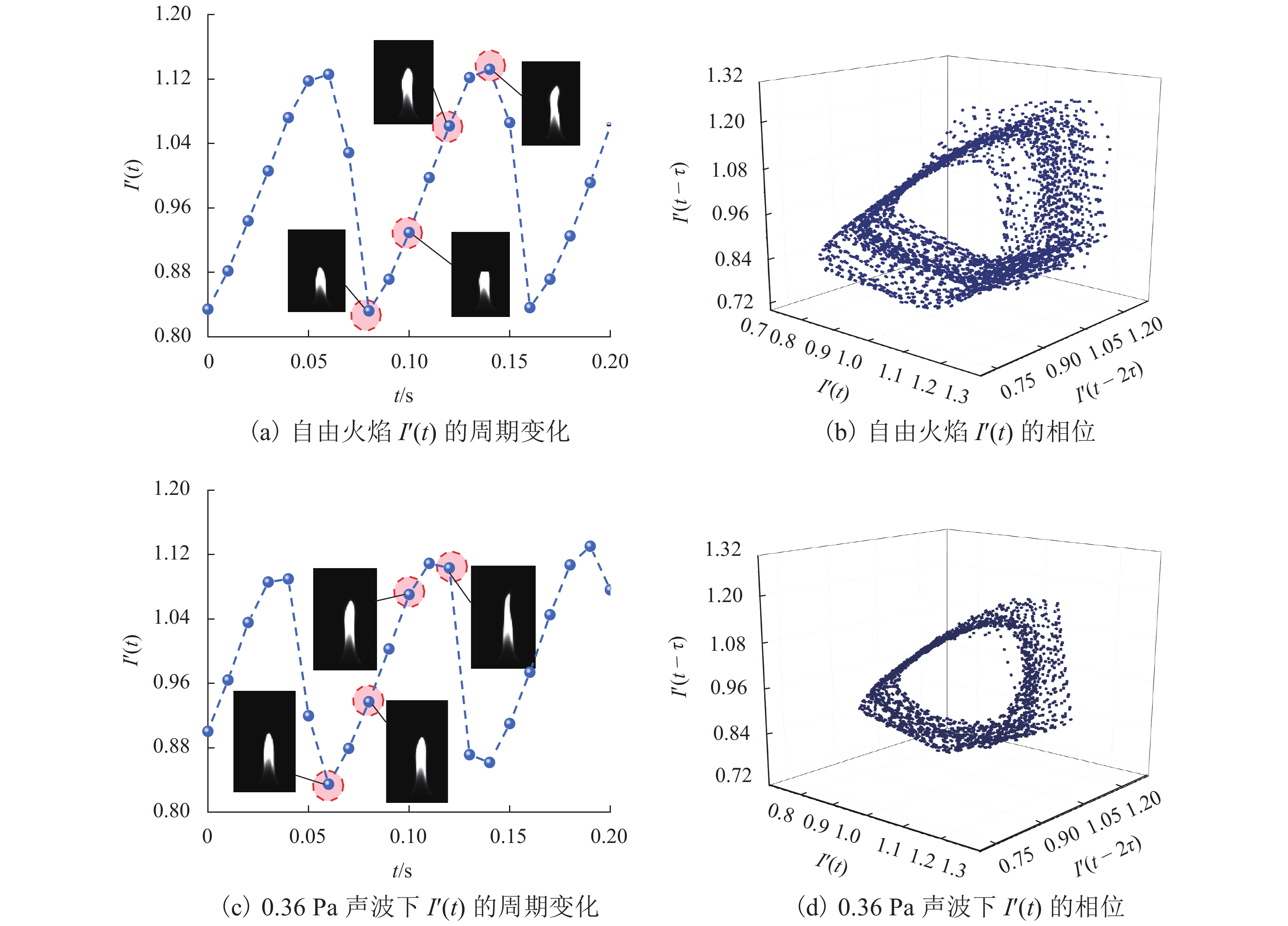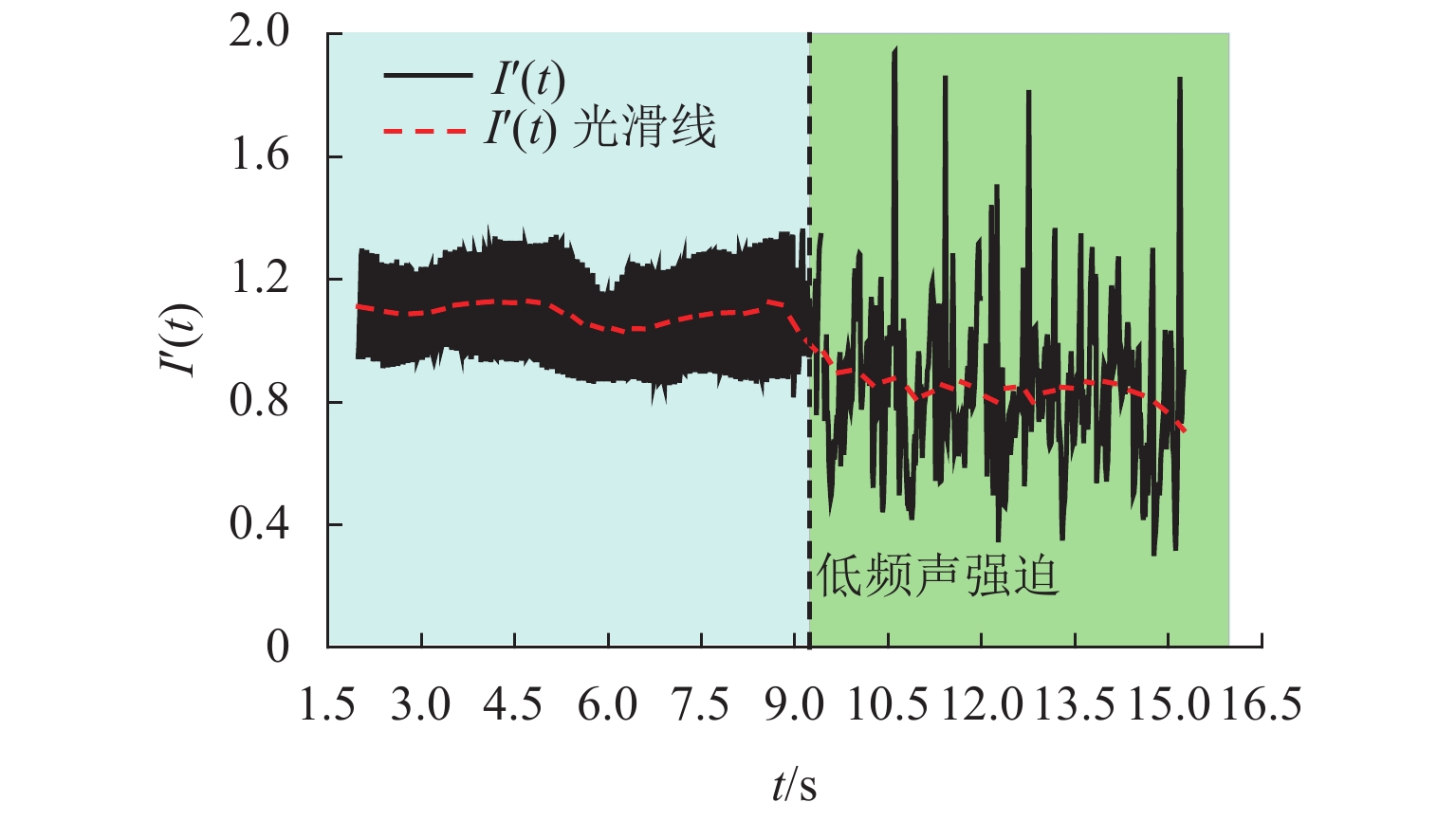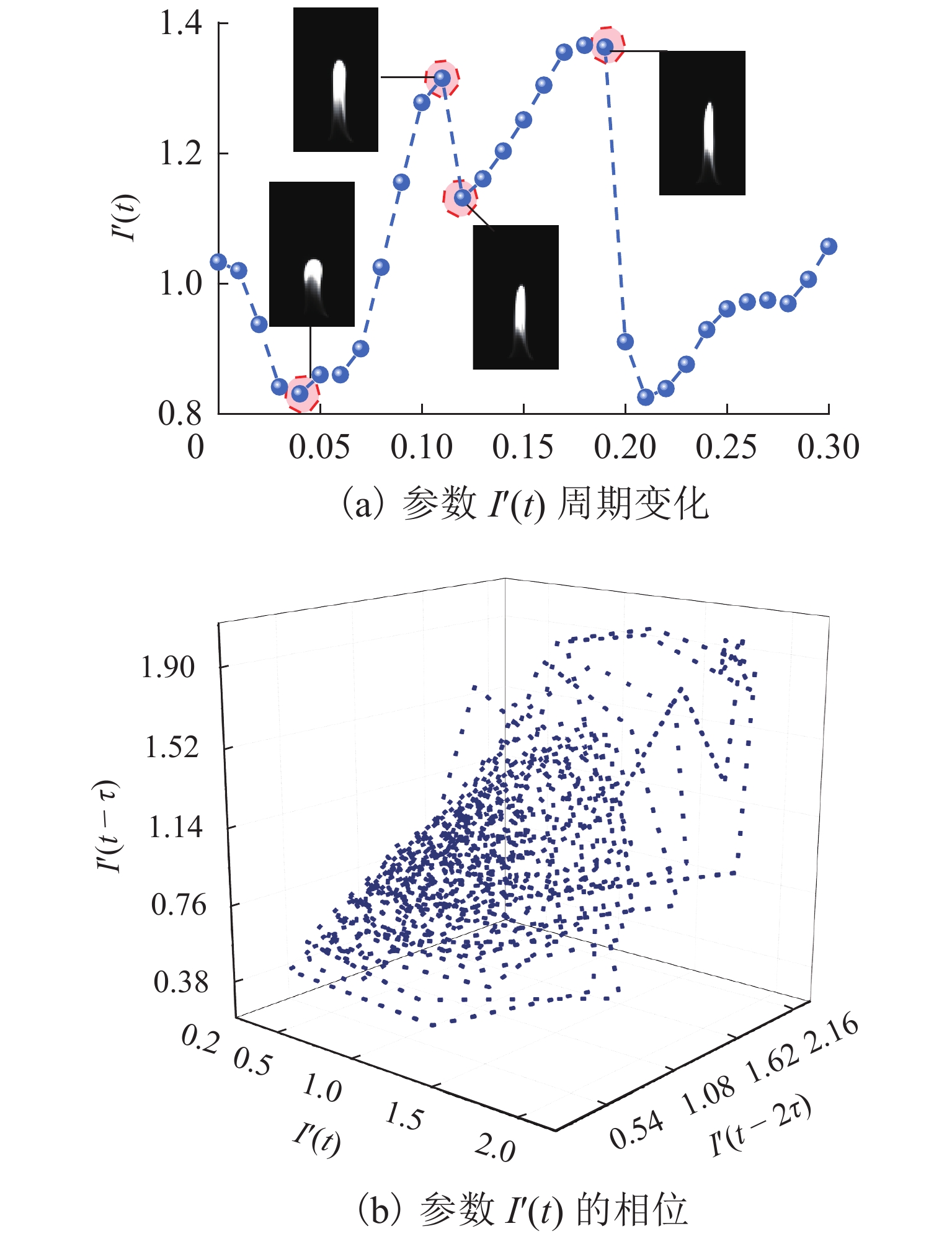Pool Flame Instability Characteristics under Transverse Acoustic Wave Disturbance
-
摘要:
为理解声波灭火机制及声波扰动下的火焰动力学,进行了横向低频声波扰动乙醇池火燃烧实验. 采用的低频声波频率范围为28 ~ 54 Hz,火焰位置处当地声压范围为0.10 ~ 1.25 Pa,通过改变声波导流管长度和声波导流管与火焰距离研究了声学基础参数、火焰现象学特征、火焰高度与宽度及其周期性脉动特性,并建立了耦合声波参数的火焰宽度与高度模型. 研究结果表明:相比自由火焰,较低声压扰动使火焰形态与时序变化更加稳定,较大声压扰动会使火焰失稳;随当地声学雷诺数增加,火焰相对高度被声波压制而减小,火焰宽度由被挤压转变为被拓展状态;较低声压会调制火焰导致其周期性变得更稳定,相位变得规则,较高声压会扰乱火焰周期性,使得火焰脉动紊乱,相位变得混沌.
Abstract:Ethanol pool flame experiments disturbed with transverse low-frequency acoustic wave were carried out to understand the mechanism of acoustic fire suppression and flame dynamics under acoustic disturbance. The acoustic frequency range was 28–54 Hz, and the local acoustic pressure range at the flame was 0.10–1.25 Pa. The basic acoustic parameters, phenomenological characteristics of flame, flame height and width, and flame periodic pulsation were explored with the changing acoustic duct length and distance between acoustic duct and flame. The relation model of flame width and flame height coupled with acoustic parameters was established. The results show that, compared with free flame, the lower acoustic pressure disturbance makes the flame shape and time series more stable, and the larger acoustic pressure disturbance makes the flame more unstable. With increasing Reynolds number locally, the relative flame height is suppressed by acoustic wave and declined, and the flame width changes from being compressed to being lengthened. In addition, lower acoustic pressure will modulate flame to stable periodicity and regular phase. Higher acoustic pressure will disturb flame periodicity, resulting in flame pulsation disorder and phase chaos.
-
Key words:
- acoustic wave /
- pool fire /
- instability /
- fire suppression /
- ethanol
-
表 1 实验采用的参数
Table 1. Experimental parameters
cm 实验简称 Ln Lw 实验简称 Ln Lw N2-W5 2 5 N10-W0 10 0 N2-W10 2 10 N10-W10 10 10 N5-W0 5 0 N15-W0 15 0 N5-W10 5 10 N15-W10 15 10 -
[1] 朱军,佘平,李维炼,等. 基于导航网格的室内火灾逃生路径动态规划[J]. 西南交通大学学报,2020,55(5): 1103-1110.ZHU Jun, SHE Ping, LI Weilian, et al. Dynamic planning method for indoor-fire escape path based on navigation grid[J]. Journal of Southwest Jiaotong University, 2020, 55(5): 1103-1110. [2] NIEGODAJEW P, ŁUKASIAK K, RADOMIAK H, et al. Application of acoustic oscillations in quenching of gas burner flame[J]. Combustion and Flame, 2018, 194: 245-249. doi: 10.1016/j.combustflame.2018.05.007 [3] MCMANUS K R, POINSOT T, CANDEL S M. A review of active control of combustion instabilities[J]. Progress in Energy and Combustion Science, 1993, 19(1): 1-29. doi: 10.1016/0360-1285(93)90020-F [4] YI E Y, BAE M J. On a fire extinguisher using sound winds[J]. Journal of Engineering and Applied Sciences, 2018, 13(4): 977-980. [5] BEISNER E, WIGGINS N D, YUE K B, et al. Acoustic flame suppression mechanics in a microgravity environment[J]. Microgravity Science and Technology, 2015, 27(3): 141-144. doi: 10.1007/s12217-015-9422-4 [6] CHEN S, ZHAO D, LI H K H, et al. Numerical study of dynamic response of a jet diffusion flame to standing waves in a longitudinal tube[J]. Applied Thermal Engineering, 2017, 112: 1070-1082. doi: 10.1016/j.applthermaleng.2016.10.152 [7] HAUSER M, LORENZ M, SATTELMAYER T. Influence of transversal acoustic excitation of the burner approach flow on the flame structure[J]. Journal of Engineering for Gas Turbines and Power, 2011, 133(4): 803-812. [8] DAVIS M R, LIN L H. Structures induced by periodic acoustic excitation of a diffusion flame[J]. Combustion and Flame, 1995, 103(3): 151-160. doi: 10.1016/0010-2180(95)00050-G [9] KIM K T, LEE J G, QUAY B D, et al. Response of partially premixed flames to acoustic velocity and equivalence ratio perturbations[J]. Combustion and Flame, 2010, 157(9): 1731-1744. doi: 10.1016/j.combustflame.2010.04.006 [10] DEMARE D, BAILLOT F. Acoustic enhancement of combustion in lifted nonpremixed jet flames[J]. Combustion and Flame, 2004, 139(4): 312-328. doi: 10.1016/j.combustflame.2004.09.004 [11] FACHINI F F. Transient effects in the droplet combustion process in an acoustically perturbed high temperature environment[J]. Combustion Science and Technology, 1998, 139(1): 173-189. doi: 10.1080/00102209808952086 [12] OKAI K, MORIUE O, ARAKI M, et al. Combustion of single droplets and droplet pairs in a vibrating field under microgravity[J]. Proceedings of the Combustion Institute, 2000, 28(1): 977-983. doi: 10.1016/S0082-0784(00)80304-5 [13] KIM J S, WILLIAMS F A. Contribution of strained diffusion flames to acoustic pressure response[J]. Combustion and Flame, 1994, 98(3): 279-299. doi: 10.1016/0010-2180(94)90242-9 [14] CANDEL S. Combustion dynamics and control: Progress and challenges[J]. Proceedings of the Combustion Institute, 2002, 29(1): 1-28. doi: 10.1016/S1540-7489(02)80007-4 [15] DARPA. Instant flame suppression phase Ⅱ − final report[R]. [S.l.]: Defense Advanced Research Projects Agency, 2008. [16] FRIEDMAN A N, STOLIAROV S I. Acoustic extinction of laminar line-flames[J]. Fire Safety Journal, 2017, 93: 102-113. doi: 10.1016/j.firesaf.2017.09.002 [17] XIONG C Y, LIU Y H, XU C S, et al. Extinguishing the dripping flame by acoustic wave[J]. Fire Safety Journal, 2021, 120: 103109.1-103109.9. doi: 10.1016/j.firesaf.2020.103109 [18] 刘长春,刘新磊,周莎莎,等. 火焰脉动在火灾领域相关研究进展[J]. 中国安全生产科学技术,2018,14(3): 48-56. doi: 10.11731/j.issn.1673-193x.2018.03.007LIU Changchun, LIU Xinlei, ZHOU Shasha, et al. Research progress on flame pulsation in fire field[J]. Journal of Safety Science and Technology, 2018, 14(3): 48-56. doi: 10.11731/j.issn.1673-193x.2018.03.007 [19] HU L H, HU J J, DE RIS J L. Flame necking-in and instability characterization in small and medium pool fires with different lip heights[J]. Combustion and Flame, 2015, 162(4): 1095-1103. doi: 10.1016/j.combustflame.2014.10.001 [20] 史学强,张玉涛,张园勃,等. 低频声波激励下乙醇池火燃烧特性研究[J]. 工程热物理学报,2022,43(3): 830-839.SHI Xueqiang, ZHANG Yutao, ZHANG Yuanbo, et al. Combustion characteristics of an ethanol pool fire perturbed by low-frequency acoustic waves[J]. Journal of Engineering Thermophysics, 2022, 43(3): 830-839. 期刊类型引用(0)
其他类型引用(3)
-





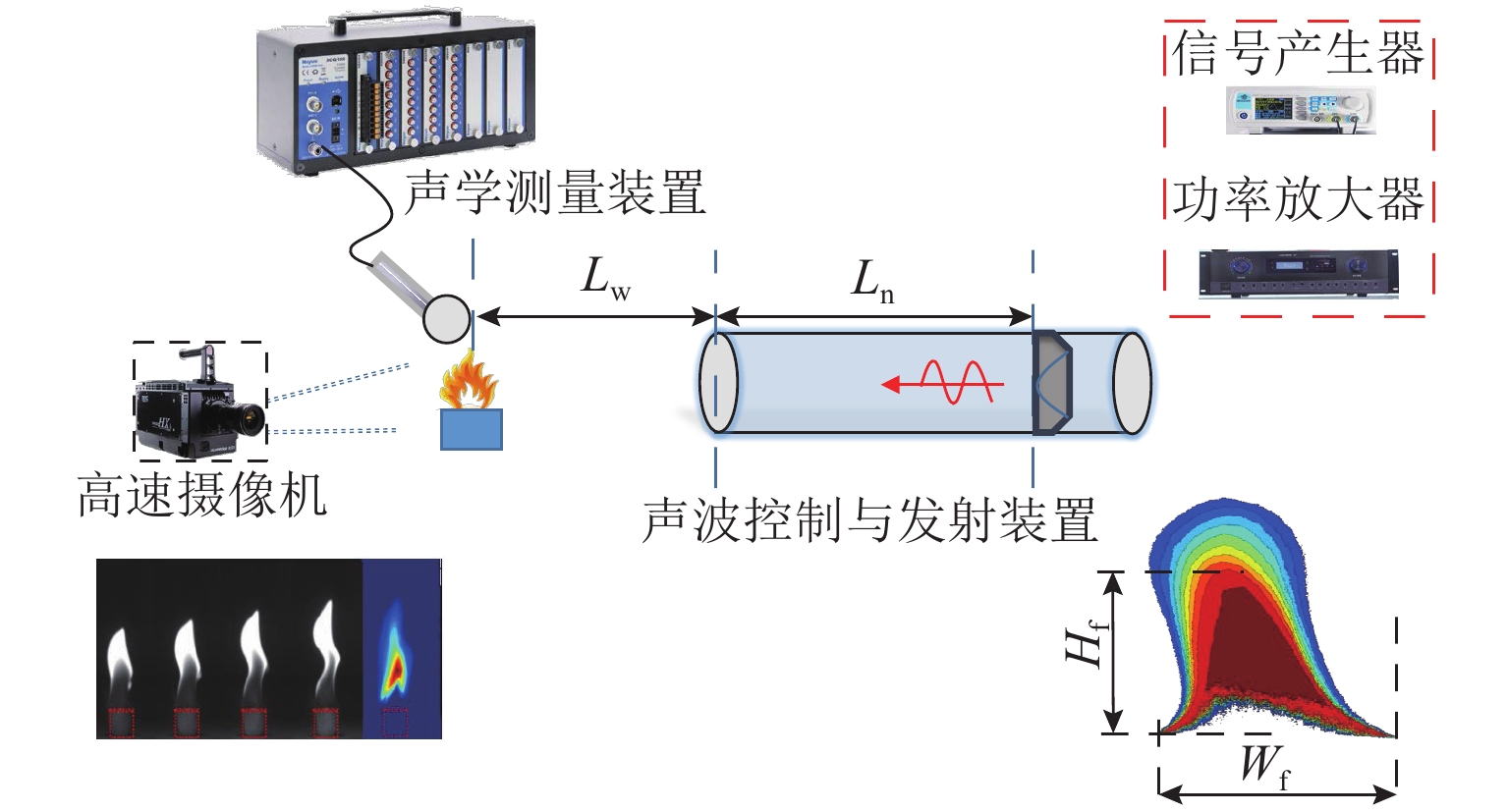
 下载:
下载:
